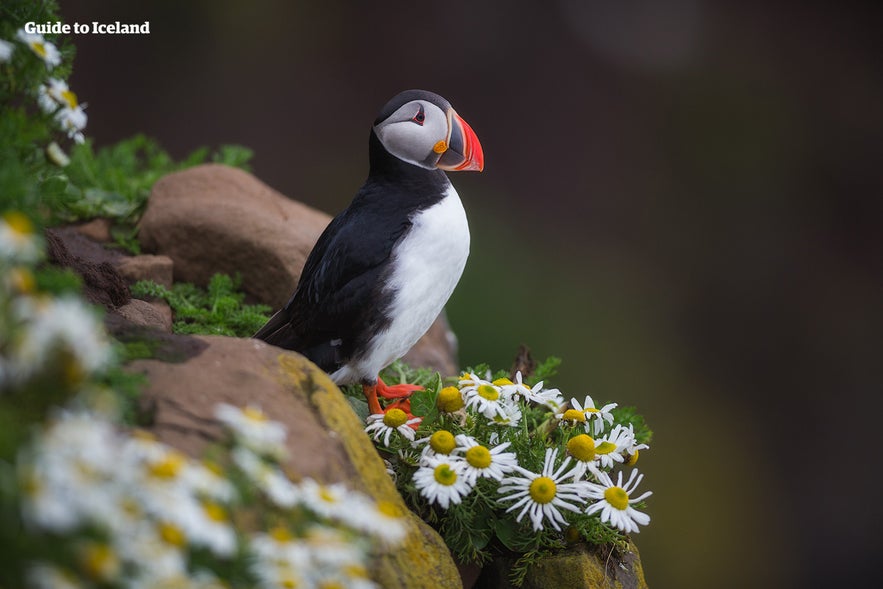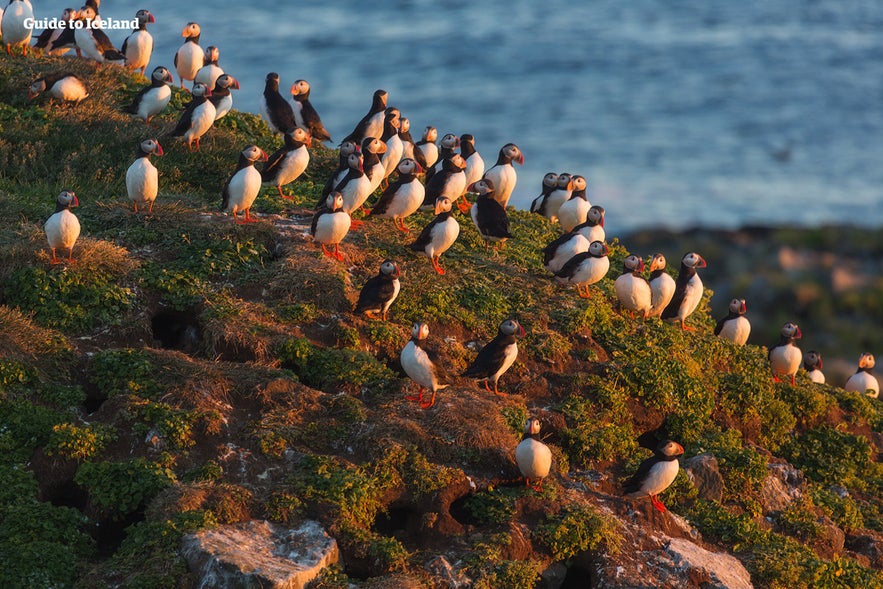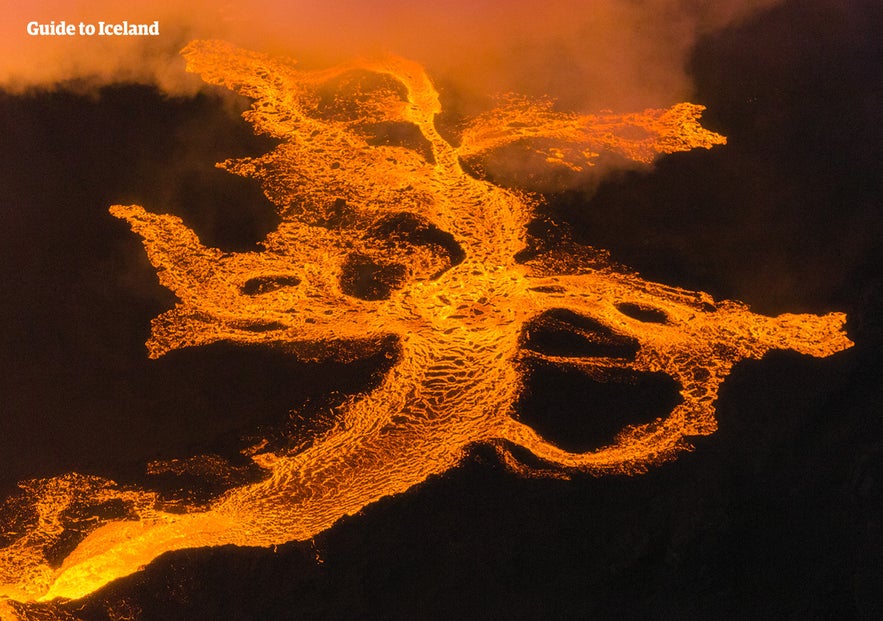
Heimaey is the largest island of the Westman Islands and the only one that is inhabited.
It has a population of approximately 4,000 people and a fascinating dark history. Learn more about this region on a tour of Westman Islands, and enjoy a stay in accommodation in Heimaey.
Därför kan du lita på vårt innehåll
Guide to Iceland är den mest pålitliga reseplattformen på Island och hjälper miljontals besökare varje år. Allt vårt innehåll skrivs och granskas av lokala experter som är djupt förtrogna med Island. Du kan lita på oss för korrekt, aktuell och tillförlitlig reserådgivning.
Heimaey Today
Heimaey is a cheerful, vibrant island that draws locals and visitors alike throughout the year. It is much more popular in summer, however, as more Atlantic Puffins nest here and in the rest of the Westman Islands than anywhere else in the world.
Many boat tours take visitors out to see them from May to September, and on many of these, it is possible to see several types of whale and dolphin. The Westman Islands are renowned for being the best place in Iceland to look out for Orcas and Fin Whales.
The puffins can also be seen inland, and, in August and September, even in town. The pufflings get confused by the town lights and thinking it is the ocean, wander in. It is a tradition for the children to find them and throw them safely in the sea (or to collect them up and charge a tourist to do so).

To see nesting puffins, the best place is without a doubt Stórhöfði, the ‘Great Cape’ on the southern side of Heimaey. There is a lookout point here, and several paths where you can walk along the cliffs for better views. Even in midsummer, however, remember to dress warmly as Stórhöfði is one of the windiest places in Iceland; the fiercest winds ever recorded in the Northern Hemisphere were measured here.
To avoid the crowds, puffins can also be seen in the cliffs of the north, such as around Dalfjall and Heimaklettur, and the eastern bay of Stakkabót. Other seabirds can be seen nesting in vast, mixed colonies all around the island.
Heimaey’s history, discussed in detail below, can be learnt about in the museums, with the most notable one being the Eldheimar Volcano Museum, which discusses the 1973 eruption of Eldfell. It is also possible to walk up to the Eldfell crater, where this catastrophic volcano erupted.
Other attractions include Sæheimar, a beautiful aquarium; Sagnheimar, a folk museum; a golf course; and a swimming pool.
Slaves, Pirates, Volcanoes and Heimaey

The first people known to make landfall on Heimaey were two escaped slaves, and they would not live their long. The two men, who were Irish and captives of the foster brother of Reykjavík’s founder, Ingólfur Arnarson, killed their master and fled here in order to avoid vengeance.
Arnarson, however, found the body before they could make a clean escape, and saw their boats headed to the uninhabited islands off the South Coast. He followed them and hunted them down, killing one and driving the other to throw himself to his own death off of a cliff.
As the Irish were then known as ‘Westmen’, the islands of the archipelago that include Heimaey have been called the Westman Islands ever since. The hill that the slave threw himself off has since been named after him, as Duffy’s Hill, or Dufþekja.
It is possible that there were settlers on Heimaey before even these slaves reached it, as a recent archaeological dig showed evidence of homes from around 800 AD (years before Ingólfur was even born). According to the Book of Settlements, however, the first person to make a permanent home there did in 900 AD.
The population of Heimaey slowly grew, as more settlers arrived, families expanded, and the fertile fishing waters around it became known. The Danish established buildings there once they took control of Iceland, showing its significance as a port.
However, tragedy would strike in 1627: pirates. Likely hailing from the Algiers, and part of the Barbary Fleet that the Ottoman Empire used to terrorise the seas at the time, they raided Iceland’s coasts and islands. While, on the mainland, Icelanders could flee into nature, on Heimaey they had nowhere to go, and 237 people were captured.
Less than a hundred returned to Iceland; most of the rest sold on the slave market. The terror and pain the people captured endured was written about by a priest who miraculously survived.
The struggles endured by the people of Heimaey would not end there, although no major incident would arise on the island for the other three centuries. When it did, however, the results were explosive.
In 1973, the residents of Heimaey woke up to an eruption tearing through the middle of their town. Fissures over a kilometre in length snaked through the houses, and lava and ash destroyed over 400 homes. As unexpected and terrible as it was, the response was incredible, and all 5,300 residents were whisked to the mainland safely. Only one is thought to have died as a result of the eruption.
To limit the spread of lava, US troops and Icelandic rescue services pumped seawater on top of it to hasten its freezing. This technique not only saved the harbour from being closed off - which would have destroyed the town’s economy and future - but it actually improved it.









